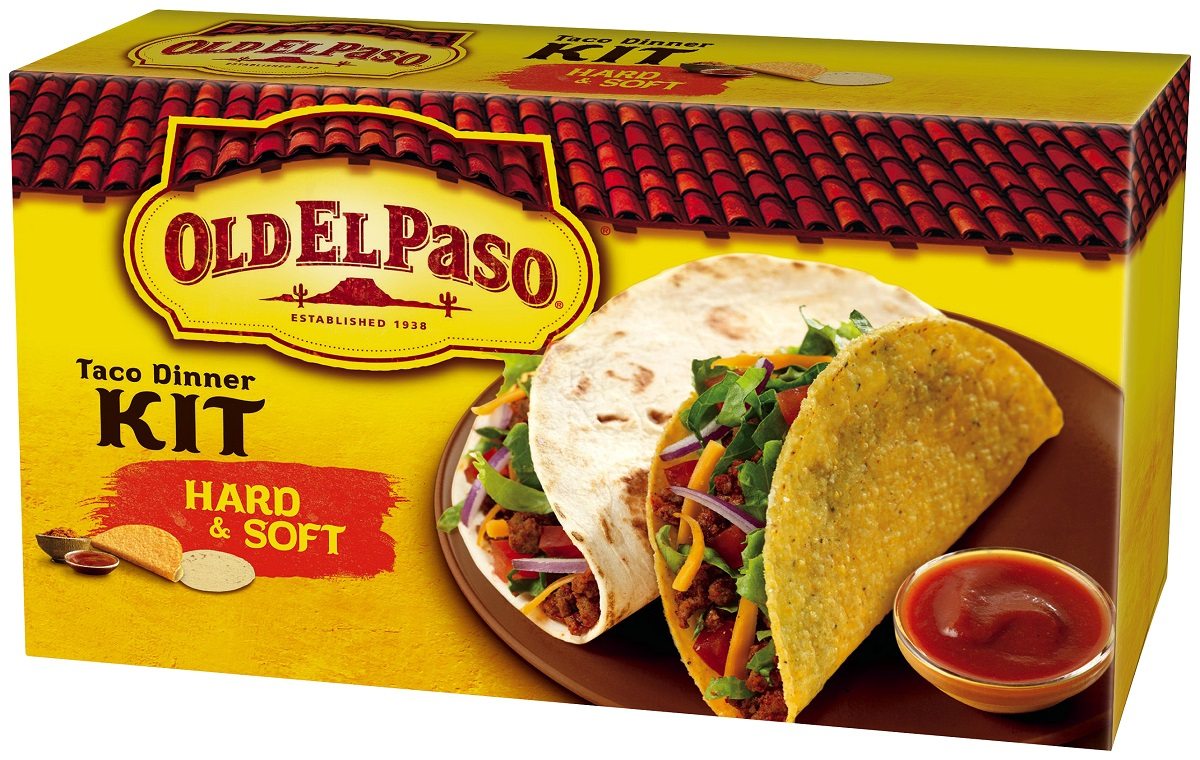Remember “¿Por qué no los dos?”
This is part of the “New Latino Identity” series, in which Dieste explores how Latinos define themselves through factors like geography, language, gender and social norms. We aim to uncover the tension points that are forcing Latinos to shed their labels and opt for fluid expressions of their identity.
Most people, especially Hispanics who are considered bicultural today, can recall the little girl from the Old El Paso commercial whose memorable line: “¿Por qué no los dos?” became an internet meme and solved the most difficult question for taco lovers – soft or hard shell tacos. But what I remember is a commercial filled with stereotypes about Mexican culture trying to sell a taco that barely resembles something one would eat in Mexico.
Sombreros Are Not The Way Into A Bicultural’s Heart
The commercial opens inside what seems a stock image home with two, young Hispanic children arguing about which type of taco is the best. Adding the two children’s tan skin and dark hair, the mom bringing tortilla chips inside a sombrero, and the cacti and Mexican pottery adorning the house, the first nine seconds of the 30-second spot contain more Mexican stereotypes than I can count with my fingers. This commercial, like many others, has wrongly defined the Mexican identity with stereotypes in order to profit from people who are too unaware to realize the true range and fluidity of the Mexican and Latino identities.
Watch Spot
We Are Not All The Same
If I was walking down the street, what people would see is a young woman of average height, fair skin, hazel eyes, and light brown hair – but would they also know I am Mexican? Probably not, because stereotypes would have them believe I am anything but Hispanic. When I moved to the US at the age of eight, the first question I was asked, after I told my classmates I was from Mexico, was: Really? But you look white. I didn’t know how to reply to this statement, but the follow up would always be: I don’t believe you. Prove it! Say something in Spanish.
As a child, I found it interesting that people had a difficult time believing me when I said I was from Mexico. Living in Tennessee, teachers, new friends and their parents all stared back in disbelief when I explained where I came from. Clarifying why I looked the way I look became a tedious task. First, I had to prove myself by speaking in Spanish and if asked if I was half Mexican I would have to negate and explain that I am in fact full Mexican. Then, if people still found it hard to believe, I would give a quick history lesson about Spanish conquistadors and immigrants in order to explain my whiteness and why you can actually find “white” people South of the border.
Stereotypes Are Not Creative
I have not been stared at in disbelief nor have people automatically assumed facts about my culture each time I have met a new person in the last 13 years of living in the United States, but it does occur more often than we care to think it does.
Ads like the ones presented by Old El Paso and Coffee Mate are just a couple of examples that have spread exaggerated stereotypes about Hispanic culture. This adds to the difficulty in understanding and accepting something out of the norm, such as the growth of a more bicultural audience. The world is becoming a more interconnected place. Cultures are blending together and stereotypes are disappearing.



Commercials like these will have you believe that all Latinos are the same – we all look, act, and speak the same way, when in fact there are many variations to our identities which have stemmed segments such as bicultural and Latinx. Creativity does not live in stereotypes, so advertisers should challenge the way they think about their consumers because the society I stepped into 13 years ago is not the same I find today. Advertisers should not have to sacrifice content or their brand’s image in order to have a culturally correct and successful ad campaign so… ¿por qué no los dos?
To learn more about diversity and how to effectively reach a bicultural audience, follow Dieste Inc. and be sure to subscribe to Provoke Weekly for the latest trends in multicultural marketing.
Monica Gonzalez Padilla, Social Media Intern








